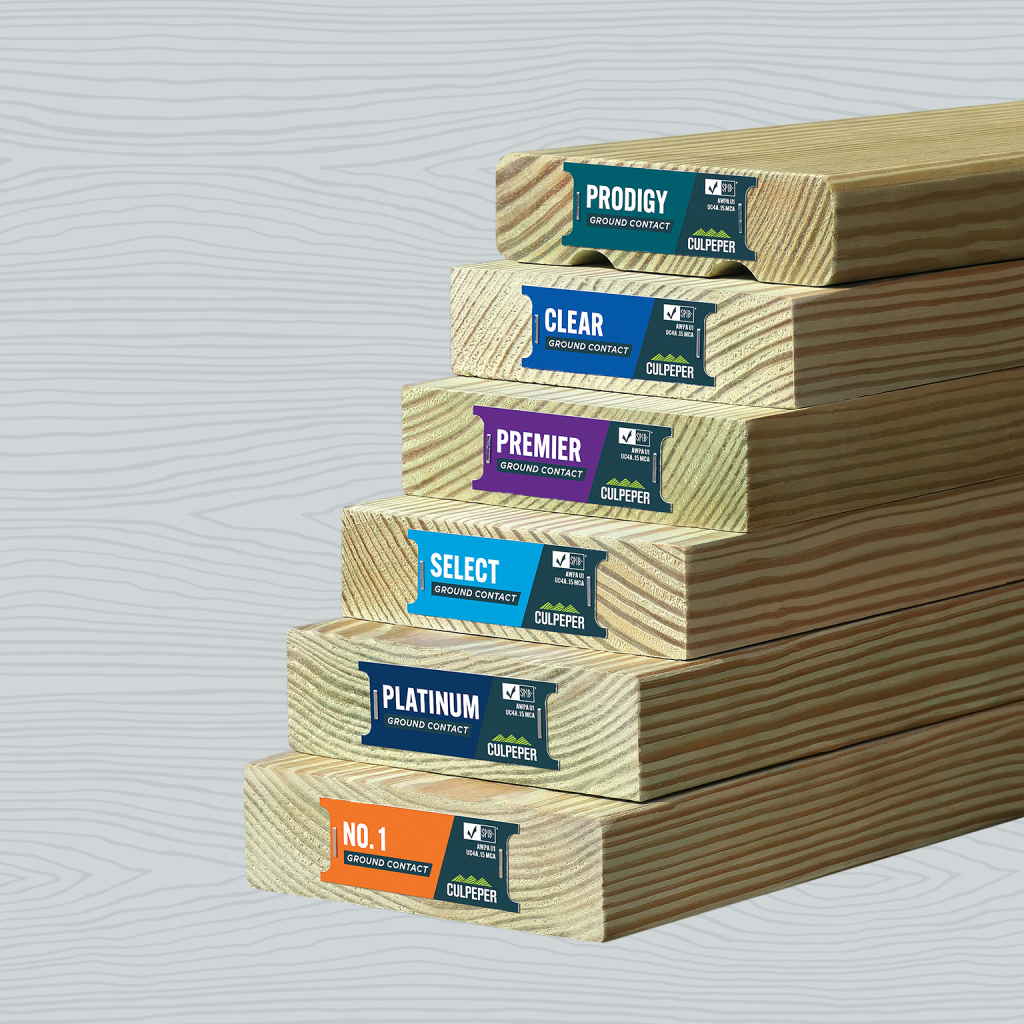
Pressure-Treated Wood: Performance Matters
Augmenting Wood’s Natural Strength for Performance and Lasting Durability
It is unlikely that the average American views lumber as anything other than a uniform, all-purpose material suitable for any construction project. The reality is that not all wood is created equal, particularly when it comes to performance. In fact, the wood species itself makes a discernible difference when it comes to building, construction, and infrastructure projects. In addition, there are varying grades of wood, which is a key consideration in the selection process.
The choice of wood and subsequent treatment processes are crucial in creating products that excel in resistance to rot, wood-ingesting insects, and fire, all while standing the test of time. Ultimately, when it comes to lumber, performance matters.
The Right Mills, Lumber, and Treatments
The type of wood selected for pressure treatment is a key factor in determining the overall performance of the final product. At Culpeper Wood Preservers specifically, southern yellow pine is the wood of choice. However, other manufacturers may use other softwoods, such as regular pine, cedar, Douglas fir, or Western red cedar. The southern yellow pine species is known for its excellent ability to absorb treatment chemicals, which enhances its durability and resistance to decay.
The quality of the wood is also dependent on the source, which is why Culpeper is extremely selective, only buying from the most reputable mills. Many of the sawmills that Culpeper purchases from are within close proximity to its headquarters. This reduces freight costs and ensures that the wood remains in optimal condition from harvest to treatment. In addition, Culpeper takes several steps to ensure quality and performance, such as storing lumber in dry conditions before treatment. This practice enhances the wood’s appearance and contributes to its longevity by preventing premature decay.
Once high-quality wood is selected, then the treatment process begins, which is crucial to the efficacy of pressure-treated wood. It is the treatment itself that provides rot and decay resistance. This is achieved through the infusion of chemicals into the wood cells. At Culpeper, Micronized Copper Azole (MCA) is the primary treatment used for outdoor and ground contact applications, such as decking, supports, or fencing. MCA is known for its effectiveness in protecting wood from outdoor elements, weather, and other biological threats.
For indoor applications, borate-treated wood may be used (particularly in areas prone to termite infestation) because it is a more cost-effective option. Borate-treated wood is often used for applications such as sill plates. Though borates are less effective at withstanding outdoor elements, they offer substantial protection against insects and termites, which pose a significant threat in the southern regions of the United States.
Fire Resistance: Slowing Down the Flames
Fire resistance is a key consideration in the performance of pressure-treated wood, particularly plywood, due to its end uses. This is particularly true for larger-scale townhomes or apartment projects when used as the interior sheathing that separates individual units. Culpeper’s FlamePro™ Fire Retardant Treated Wood is a plywood product that is treated with FlamePRO Interior Type A High Temperature fire retardant chemicals. FlamePRO fire retardant is a proven formulation that has been tested to the American Wood Protection Association P50 Standard for Fire Retardants. This treatment reduces the wood’s flammability, earning it a fire rating that can slow down the spread of flames for up to 30 minutes.
The goal of FlamePRO plywood is to minimize the risk of flames spreading to adjacent walls or living spaces. While the wood will eventually smolder, it provides valuable time for occupants to evacuate and for emergency services to respond, potentially saving lives and property.
Applications: Where It Matters Most
Pressure-treated wood is the optimal choice for any project that utilizes wood. However, there are specific applications where it is essential, and the required retention level can vary depending on the use.
For example, retaining wall wood requires a higher treatment retention level than ground-contact deck supports. Furthermore, a dock project that perpetually sits in water would require an even higher chemical retention level due to constant exposure to moisture.
In these cases—and any other wood application—choosing the appropriate grade and treatment type of pressure-treated wood is crucial to preventing premature failure. This highlights the importance of choosing an experienced wood supplier that can provide the right lumber for specific needs. Because not all lumber is created equal, working with an informed sales representative can ensures that the materials selected are tailored to meet the unique demands of a project.
Advancements in Modern Treatments
While the basic principles of pressure treating wood have remained consistent, there have been advancements in treatment chemicals and processes. Most notably, the industry has shifted away from Chromated Copper Arsenate (CCA) to a safer alternative such as MCA. CCA contains arsenic, copper, and chromium, and the removal of arsenic to create MCA has made it a safer product from an environmental and health risk perspective.
Even with the higher-performing MCA treatment, long-lasting pressure-treated wood also comes down to upkeep and maintenance. It is important to always stain and seal in accordance with the manufacturer’s staining recommendations. Culpeper recommends conducting this routine maintenance every three years, which includes washing down the wood and resealing and restaining to keep it protected, prevent surface damage, and maintain proper aesthetics.
Performance that Lasts
Pressure-treated wood is an essential material for any project requiring strength, durability, and resistance to environmental impacts. By choosing high-quality southern yellow pine and utilizing advanced treatment methods, Culpeper provides materials that builders can trust to perform in the most demanding conditions. Proper selection, treatment, and maintenance of pressure-treated wood can significantly extend the life of a wood project, making it a sustainable and cost-effective choice.